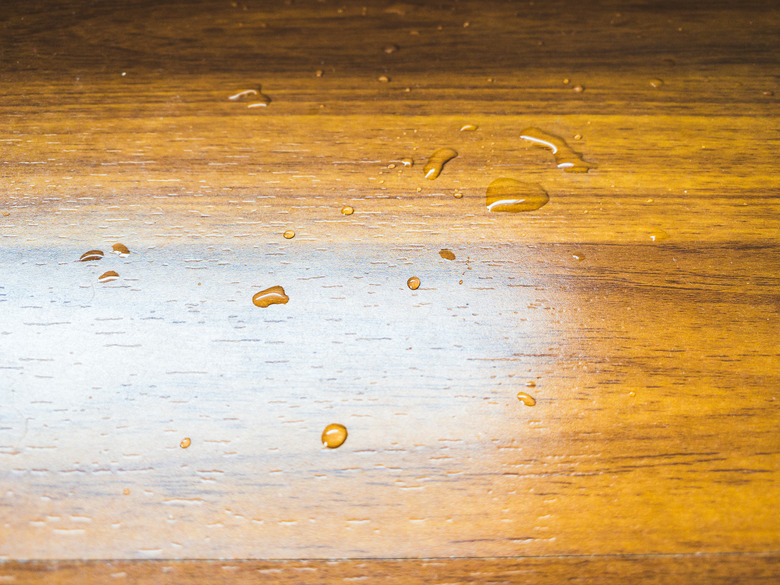What Can I Do After Spilling Bleach On A Hardwood Floor?
Bleach is great for cleaning and sterilizing nonporous surfaces, but it can easily damage and discolor many porous surfaces, including hardwood flooring. When bleach gets on hardwood, it may break down the finish and discolor the wood. While the cleaner is terrible for all types of finishes, it discolors some woods more than others, and mahogany, Brazilian cherry, and other exotic wood species are at particular risk. In contrast, woods like red oak, ash, gum, and beech are less likely to be damaged by bleach. If you accidentally spill bleach on your hardwood floor, act as soon as possible to avoid damaging your finish and discoloring the wood below.
Wipe Up the Bleach
Wipe Up the Bleach
The first thing you should do after spilling bleach is clean it up. Use clean towels or paper towels to clean up as much bleach as possible. Blot to lift the chemical rather than rubbing, which may cause it to sink in. Be careful to prevent the bleach from dripping from your towels onto other wood surfaces.
Neutralize the Bleach
Neutralize the Bleach
Stop any bleach that did sink into the floor from doing further damage by neutralizing it. Mix a solution of 1 part hydrogen peroxide to 10 parts water. Soak a clean towel in the solution, wring out excess moisture, and lay the towel over the bleach stain. Let the towel sit for 10 minutes or so and then use the towel to wipe the area, removing any remaining chemicals from the flooring.
Evaluate the Floor’s Condition
Evaluate the Floor's Condition
Bleach doesn't always destroy wood flooring, especially if you act quickly to clean and neutralize it. Once you've neutralized the spill, wait for the floor to dry and then examine the area to see the extent of the damage. If the floor isn't discolored, count yourself lucky because you don't need to do anything more. Still, you may want to apply an extra layer of finish for additional protection where the existing finish was weakened.
When the floor has been damaged, you will need to do some repairs or hire a professional to do them for you. Large, discolored areas should be sanded, stained, and refinished. If the floorboards have been corroded or warped, they may need to be replaced.
If the damaged area is small, you may be able to hide the discoloration with a wood scratch repair kit. When attempting to match your flooring color using scratch repair kits, remember to start with a lighter color and then move on to progressively darker hues. Alternatively, if you want to avoid the hassles of refinishing but the area is too large to cover with a scratch repair kit, you may just want to cover the damage with a well-placed rug.
